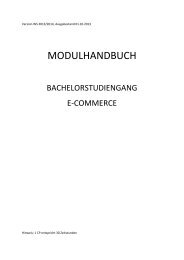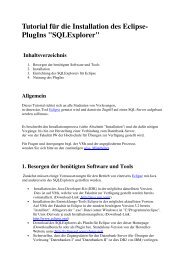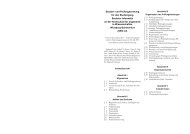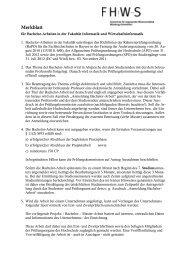FHWS Science Journal - Fakultät Informatik und Wirtschaftsinformatik
FHWS Science Journal - Fakultät Informatik und Wirtschaftsinformatik
FHWS Science Journal - Fakultät Informatik und Wirtschaftsinformatik
Create successful ePaper yourself
Turn your PDF publications into a flip-book with our unique Google optimized e-Paper software.
Patrick Mennig<br />
to pressure (resistive touch technology). The introduction of the first iPhone by Apple in 2007<br />
changed the situation f<strong>und</strong>amentally. One aspect has been the preinstalled and manifold<br />
applications, which resembled today’s apps and covered important activities. Additionally it was<br />
possible to control this smartphone with the fingers. The touchscreen is reacting to magnetic<br />
fields of human skin. The interaction happened with clearly less pressure and was easier to<br />
perform for the users. More than one point of interaction (i.e. finger) can be detected which allows<br />
so called multitouch gestures.<br />
Advertised was this behavior as the connection of an iPod (a portable music player with a hard<br />
drive), a mobile phone and an internet communicator. The slogan describes the impact of the first<br />
“real smartphone” insufficient. The concept of small applications within a comprehensive<br />
operating system fascinates both, users and developers. The latter have been excluded in the<br />
beginning. A commonly available development environment (IDE) for iPhone applications was not<br />
available. In August of 2008, Apple published version 3.1 of its IDE Xcode, including the iPhone<br />
SDK. Paired with the app store, introduced in early 2008, the baseline for today’s ecosystem of<br />
small apps from different app stores was built.<br />
In October of 2008 the first smartphone with the operating system “Android” hit the market. This<br />
OS is developed and distributed by the Open Handset Alliance <strong>und</strong>er leadership of Google Inc.<br />
Contrary to Apple’s iOS, it features a visibly more open architecture. Important to highlight is that<br />
different vendors of mobile phones can sell their devices with adjusted versions of Android.<br />
Contrary, the operating system iOS can only be fo<strong>und</strong> on devices sold by Apple. Since October of<br />
2010, a third important actor in the smartphone market is Windows with its OS “Windows Phone”.<br />
It shows the same concept of small apps that the user may load from the store. Other vendors like<br />
BlackBerry (former ResearchInMotion) focus on less typical smartphone functionality and should<br />
be excluded from the examination.<br />
The result of this evolution is a smartphone and tablet market that is contested by more than<br />
one vendor. Visible differences are fo<strong>und</strong> between phones and tablet computers. According to<br />
IDC, the market of tablet operating systems in 2012 is partitioned as follows: Apple leads with its<br />
operating system iOS with 53.8 percent market share, followed by the OS Android with 42.7<br />
percent. With large distance follows the mobile versions of Windows, reaching 2.9 percent. It can<br />
be said that iOS and Android dominate the market. Microsoft has the potential to reach higher<br />
market shares with its new system,<br />
Windows 8.<br />
Figure 1: Market share of mobile OS – tablets.<br />
Source: Author’s representation, based on IDC, 2013a.<br />
24 <strong>FHWS</strong> <strong>Science</strong> <strong>Journal</strong>, Vol. 1, No. 1, 2013








